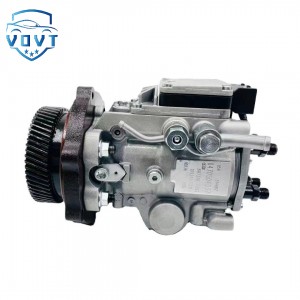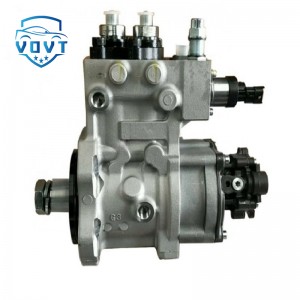Diesel Fuel Injection Pump 319-0676 Engine Auto Engine Part
products description
| Reference Code | 319-0676 |
| MOQ | 1 PCS |
| Certification | ISO9001 |
| Place of Origin | China |
| Packaging | Neutral packing |
| Quality Control | 100% tested before shipment |
| Lead time | 7~15 working days |
| Payment | T/T, Western Union, Money Gram, Paypal, Alipay, Wechat |
Energy Efficiency Optimization and Control Strategy of Variable Displacement Piston Pumps
Variable displacement piston pumps are core power components in hydraulic systems, widely used in construction machinery, industrial equipment, and agricultural machinery. However, traditional fixed-displacement control methods often lead to high energy consumption—up to 30% of energy is wasted through throttling losses when the system load fluctuates. Thus, optimizing energy efficiency and developing advanced control strategies are critical for reducing operational costs and promoting sustainability.
The key to improving the energy efficiency of variable displacement piston pumps lies in matching the pump’s output flow and pressure precisely with the system’s real-time demand. First, structural optimization plays a foundational role. For example, optimizing the swashplate angle adjustment mechanism reduces mechanical friction losses: adopting a servo motor-driven swashplate instead of a hydraulic control cylinder can lower friction resistance by 15–20%. Additionally, using high-performance materials (e.g., ceramic-coated pistons and wear-resistant cylinder blocks) minimizes internal leakage, which accounts for 10–15% of energy loss in traditional pumps.
Advanced control strategies further enhance energy efficiency. The adaptive fuzzy PID control strategy is highly effective: it dynamically adjusts the swashplate angle based on real-time load changes (e.g., pressure and flow signals from sensors). Unlike conventional PID control, it can self-tune parameters to avoid overshoot or lag, ensuring the pump operates at the optimal working point. For instance, in excavator hydraulic systems, this strategy reduces energy consumption by 25–30% compared to fixed-displacement control during light-load operations.
Another promising approach is the load-sensing control with pressure-flow compound regulation. This strategy monitors both the system’s pressure demand (via pressure transducers) and flow demand (via flow meters), then adjusts the pump’s displacement synchronously. It eliminates throttling losses caused by excessive flow output, especially in multi-actuator systems where load requirements vary frequently. Field tests show that this control method improves the overall energy efficiency of hydraulic systems by 18–22%.
In conclusion, energy efficiency optimization of variable displacement piston pumps requires a combination of structural improvements and intelligent control. Future research should focus on integrating digital twin technology to predict pump performance degradation and optimize control parameters in real time, further pushing the boundaries of energy-saving potential in hydraulic systems.
Write your message here and send it to us

























